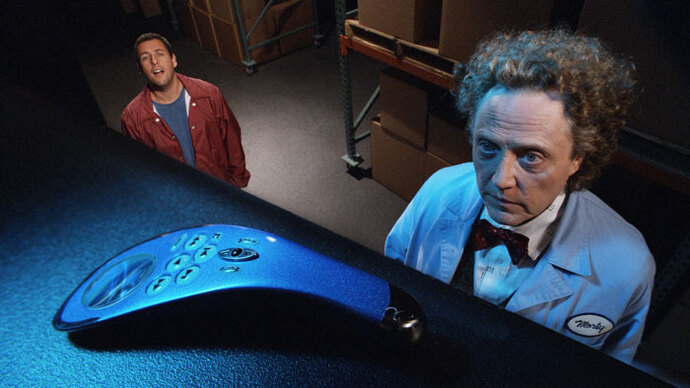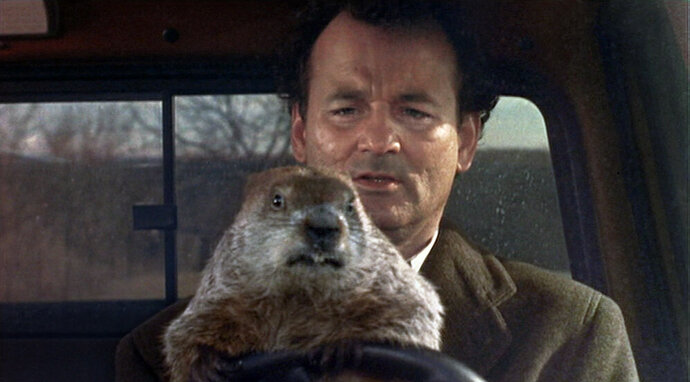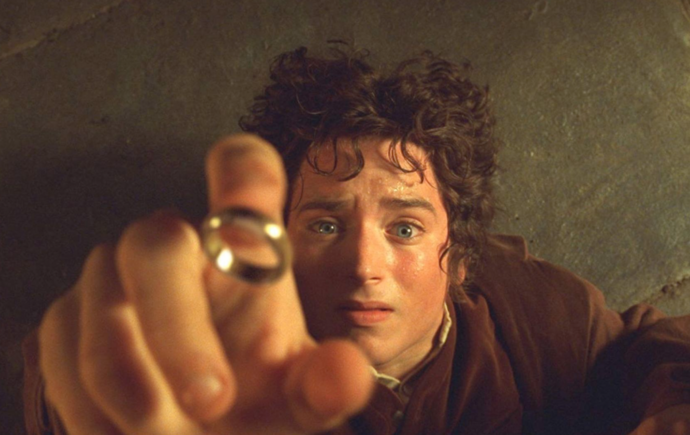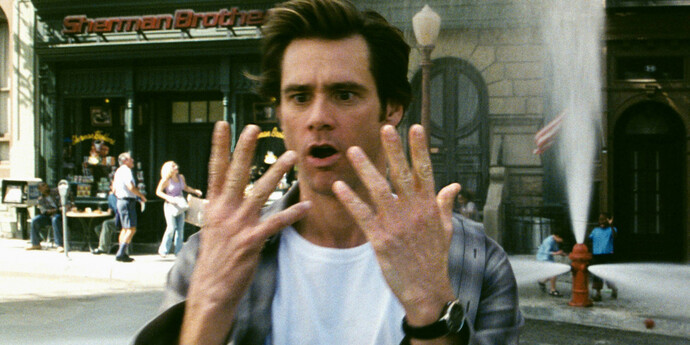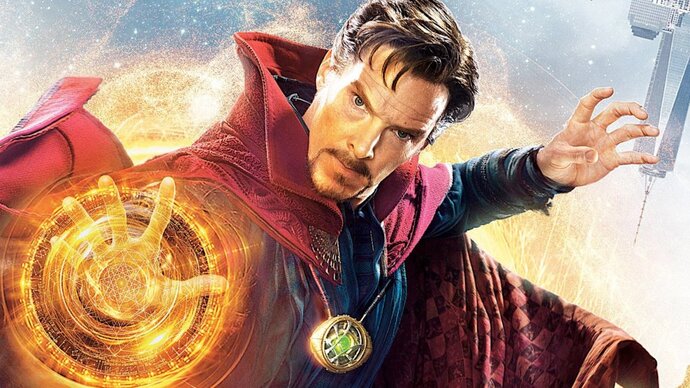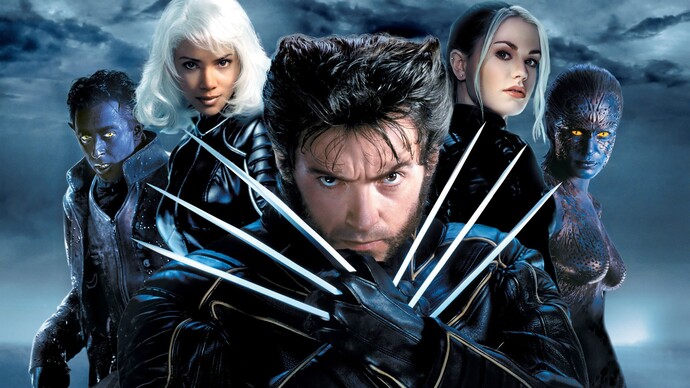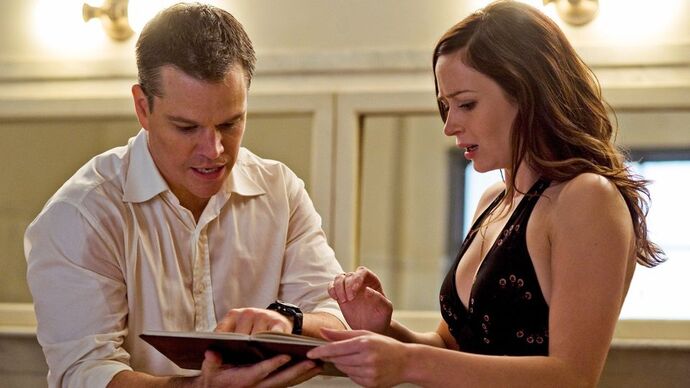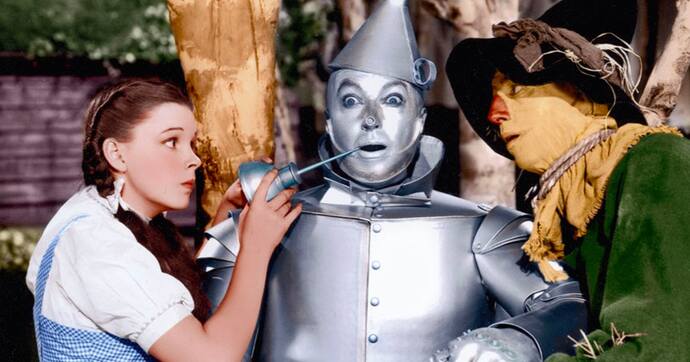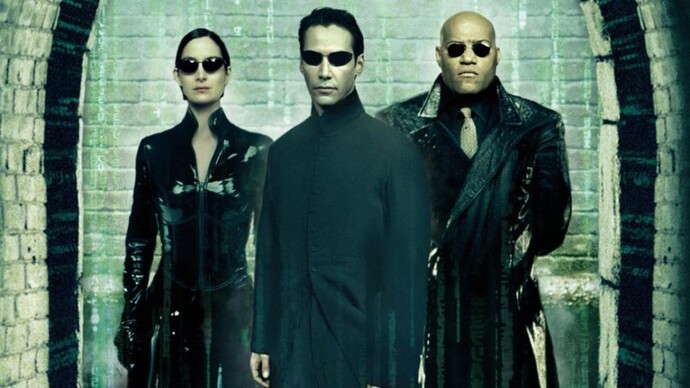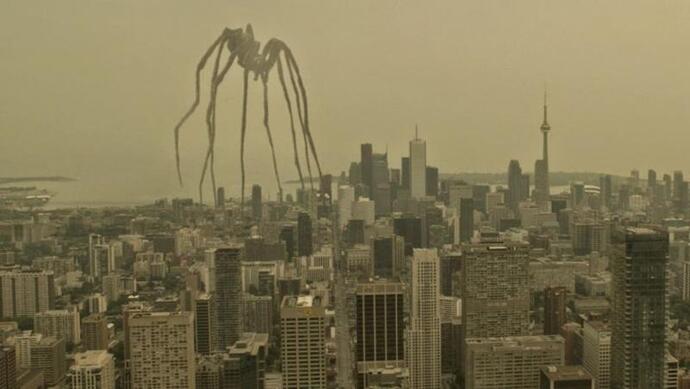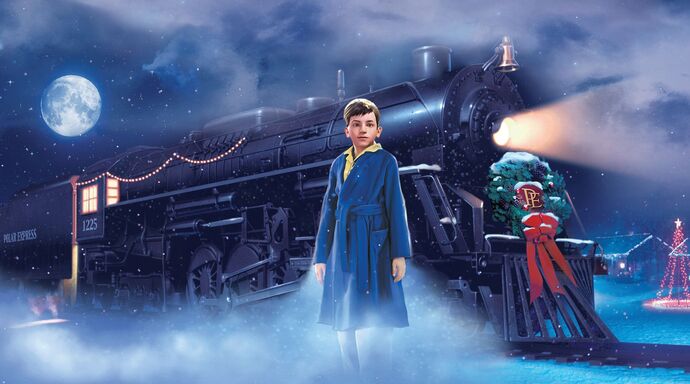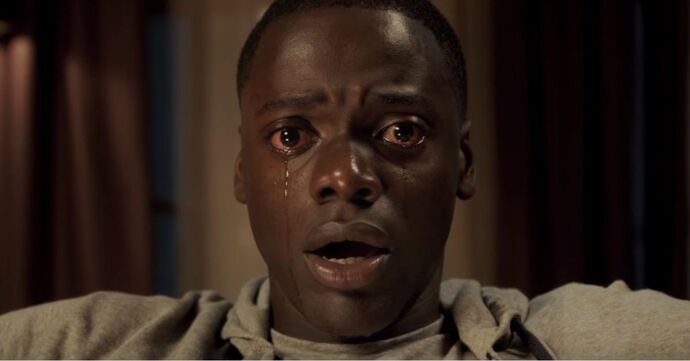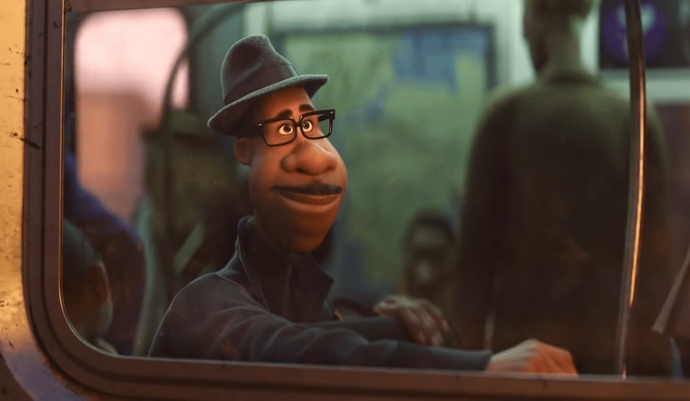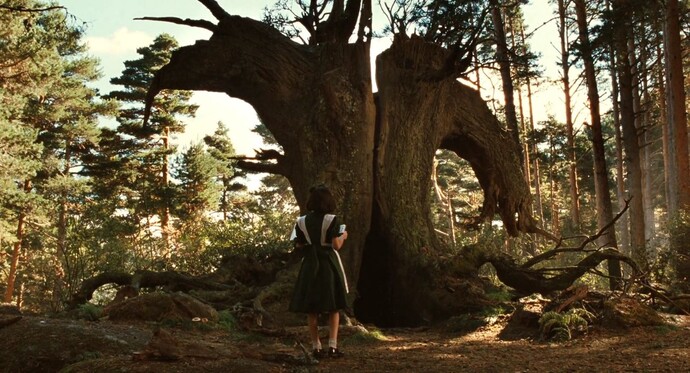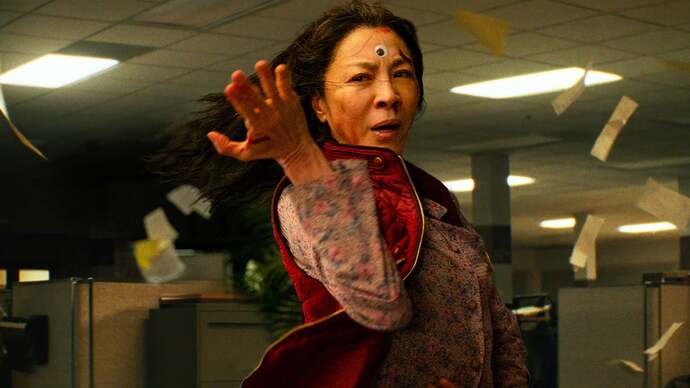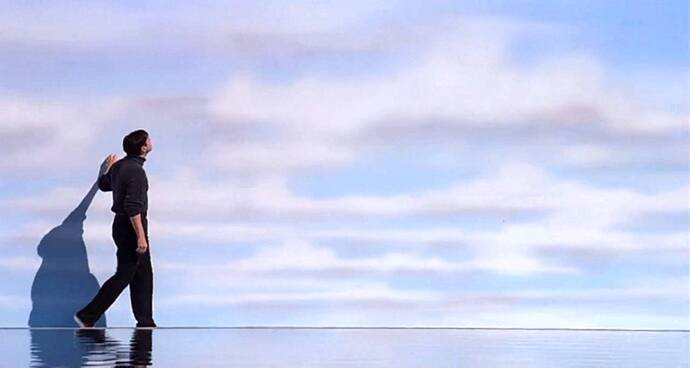These movies might set out to explore ideas about society, morality, or even conspiracies, but they all have something bigger stirring underneath the surface. Metaphors and grandiose themes are used to convey hidden messages. Well, mostly hidden. Sometimes the messages are obvious—perhaps even on-the-nose—but they’re still fun to think about! Here are our picks for the best metaphorical movies that get you thinking about hidden meanings and allegories.
17. Click (2006)
Click might not be an Oscar-winning drama, but that partly helps to make its message stound out. We expected a generic Adam Sandler comedy, but ended up inspired to live every moment of life to the fullest—and we even shed a few tears along the way. It’s not a new message, of course. YOLO has been around as a concept for as long as humans have been around. But it’s good to be reminded every now and again, and Click pushes us to pursue our dreams while treasuring every little moment along the way. Directed by Frank Coraci, Click the tells the story of an American everyman named Michael who gets the wish we all secretly want: the ability to pause, fast-forward, and replay time. Michael controls time using a universal remote that zany Christopher Walken gives him. But there’s a catch! The magical remote stores Michael’s preferences and begins to skip through time automatically, from a few hours to multiple weeks at a time. Michael ends up skimming through most of his life on autopilot, losing his connection to family and friends, steaming towards promotion after promotion, devoid of consciousness. Is that a life worth living?
16. Groundhog Day (1993)
On the surface, Groundhog Day is a lighthearted comedy romance movie with an interesting plot line. Bill Murray is his usual off-kilter self, making sarcastic observations as the grumpy workaholic Phil. One day, his bitter selfishness is put to the test when he’s forced to relive the same day over and over again. Not only does this line up some great gags, but director Harold Ramis also conveys a potent message with the premise: through the torment of Phil’s relentless cycle, he learns how to find true and lasting peace. At first he uses the time loop to lie his way into whatever he wants, but this only provides fleeting moments of satisfaction. He also tries to trick Rita into loving him, but feelings just can’t be forced. Phil would even rather attempt suicide than choose truth and goodness. These stages of Phil’s experiences could easily be compared to a spiritual awakening. Only when he relinquishes his material and selfish desires is Phil able to break the loop and achieve enlightenment.
15. The Lord of the Rings (2001–2003)
The One Ring could be read as a symbol for many things. J. R. R. Tolkien’s literary device is more than just a simple MacGuffin—it’s a metaphor. But what for? Well, here are some possibilities… The One Ring is a physical manifestation of evil. Containing the soul of Lord Sauron, the One Ring doesn’t just kill—it prolongs and drains the life of whoever bears it. It brings about war and desperation for no real reason, and does so through a sort of spiritual influence. The One Ring represents power and corruption. Frodo Baggins is chosen to bear the One Ring all the way to Mordor, as he has the least-corruptible heart out of the Fellowship. (“The hearts of men are easily corrupted.”) Hobbits are creatures of simple lives and good hearts—ones that don’t crave the power of thrones and armies. The One Ring holds an immeasurable amount of power, which is why it’s so hard to destroy. The fact that only Frodo is able to let go of the One Ring makes it a good metaphor for corruptive power. The One Ring is a metaphor for addiction. There’s a reason why Gollum calls the One Ring “My Precious,” why Frodo caresses the ring to sleep, and why Boromir attacks his friends just to hold it. It’s like a junkie assaulting those they love for taking their drugs away. The One Ring’s power is addictive, and characters feel driven towards it, tempted by an urge that overcomes reason. The One Ring is the Ego. Power, evil, and addiction are all things the Ego feeds off. In spiritual beliefs, there is the habitually material-driven pain-seeking ego and the truer form of the higher self. In psychoanalysis, there’s the Ego, Id, and Super-Ego. The One Ring drives this sense of egotistical selfishness. Wearers thrive on the influence it gives them over others, but it eventually deforms and disconnects them from love—just as the ego does. The One Ring is a weapon of mass destruction. Tolkien wrote his legendary trilogy shortly after the Second World War. During the 1940s, weapons of mass destruction were looming on the horizon as political tensions rose—and Tolkien would have been aware of this when writing The Lord of the Rings. The world-devastating power of the One Ring is reminiscent of military weapons. When put in the wrong hands, the One Ring threatens to destroy whole nations.
14. Bruce Almighty (2003)
Bruce Almighty is another film that’s outwardly a comedy but filled with unexpected implications that took us by surprise. Jim Carrey has starred in many philosophical movies, including the great Yes Man and the classic Eternal Sunshine of the Spotless Mind. In Bruce Almighty, he takes his hand at playing God. Bruce is a failing TV presenter who’s tormented by first-world problems and just plain bad luck. When he meets the physical manifestation of God (played by Morgan Freeman), God hands over his powers to see if Bruce could do a better job. Spoiler alert: he doesn’t. “Don’t play God” is a common warning in our scientifically evolving society, especially among the religious. Director Tom Shadyac shows us exactly why it’s such a bad idea, as everything Bruce recklessly wishes for comes with dire (and hilarious) consequences.
13. Doctor Strange (2016)
Doctor Strange is your typical Marvel superhero flick with a spiritual twist. Stephen Strange doesn’t have superpowers so much as he has divine powers. He learns from the Ancient One about how to use his metaphysical abilities to transcend time, space, and dimensions. The Hindu and Buddhist concept of Chakras (energy centers within the body) are interwoven into the story, symbolized by colorful circular patterns. Strange undergoes an energetic healing to overcome his physical disabilities, reminiscent of the Japanese practice of Reiki. He taps into the ancient and ritualistic to become a master of the self. From this inner healing, he’s able to save the outer world. Director Scott Derrickson dives deep into the topics of death and eternal life, concluding with the message that “it’s not all about you.” Doctor Strange is essentially about the spiritual awakening of a wealthy but hollow man, in the form of a flashy superhero movie.
12. The X-Men Franchise (2000–2020)
The X-Men franchise has been compared to pretty much every minority group out there. Fans see the mutant race—who spend most of the series trying to prove they’re not a threat to humankind—as a metaphor for oppressed groups. The most obvious interpretation is about ethnicity. Stan Lee introduced X-Men way back in 1963, when the Civil Right’s Movement was still booming. These comic book characters who are marginalized by society drove home an important message of tolerance. Since then, X-Men has also been viewed in light of the LGBTQ+ community, who are similarly considered a “threat” to nature. X-Men: Days of Future Past even has Holocaust undertones as mutants are imprisoned in camps alongside “the humans who dared to help them.” Although an important message, it has raised controversy for using such real horrors in a superhero blockbuster context.
11. The Adjustment Bureau (2011)
The Adjustment Bureau is pretty face-on about its religious themes of fate and destiny. Although you don’t have to dig very far to find the allegory of this movie, the multiple questions it raises are very interesting to mull over. Matt Damon plays politician David who falls head-over-heels for Emily Blunt’s ballerina Elise. However, strange men in hats try to keep him off her path. These men—the “Adjustment Bureau”—are the keepers of fate, ensuring everybody stays on their own assigned paths. The Bureau explains how free will has caused so much damage throughout history—World Wars, the Dark Ages, the Great Depression. But David doesn’t care. When he attempts to defy “The Plan,” both his and Elise’s futures start to unravel. Director George Nolfi blends the action-thriller genre with tinges of romance, using them to examine the questions of God, chance, and whether we really have control over our lives.
10. The Wizard of Oz (1939)
A film as old and famous as The Wizard of Oz is bound to have a few fan theories circling around it. Is the Yellow Brick Road a metaphoric journey to enlightenment? Does that mean the Wizard is God? Or does the Wizard’s let-down mortality suggest God is just a hoax? There are many different interpretations, but the most popular has to be its representation of the Populist Movement. This theory is rooted in the original book by L. Frank Baum, published in 1900. Sure, it was released as a playful children’s novel, but some scholars believe that Baum’s dreamworld holds color-coded symbolism (like the glittering Emerald City representing the US dollar). Populism argues that money and power have no real substance, much like the Wizard in the end. The Yellow Brick Road that leads to all of this wealth represents the gold standard, and it’s walked by Dorothy (who is a symbol of the everyday American citizen). If you want to take it further, the Tin Man is the industrial worker, the Cowardly Lion a politician, and the Scarecrow a farmer. All are united in their desperate-but-ultimately-unfulfilling pursuit of success. Oz itself is an abbreviation of “ounce,” the standard measurement for gold.
9. The Matrix Franchise (1999–2021)
“Glitches in the Matrix” have become a popular topic on social media. People have been capturing these “glitches”—moments that defy science and nature—and posting them all over YouTube. The theory that we’re all living in a simulation isn’t a new one; it’s been around since the dawn of computers (and even before). The Matrix uses this theory as the basis for its highly successful franchise. Neo is a computer hacker who wakes up (evocative of a spiritual awakening) to the truth of the simulation. Through this unplugging, Neo is able to bend physical laws and essentially “hack” reality. The Red Pill. The Blue Pill. Which would YOU choose? This metaphorical question forces the characters (and audiences) to choose between a life-changing truth or a comfortable lie. Directors Lana and Lilly Wachowski propose the truth to be one of the earliest philosophical theories around—that our reality isn’t real. The film has raised copious discussions between scientists, philosophers, and fans regarding the plausibility of the Matrix.
8. Enemy (2013)
Enemy is all about identity and ideas of the “self.” Are we to blame for our own failings? Do we subconsciously keep ourselves stuck in one place? Are we ever truly one person? Or are we split into multiple different personalities and possibilities? Denis Villeneuve is known for his complex storylines and intricate sci-fi films. And while Enemy is certainly his least flashy movie, it’s probably his biggest headscratcher. There are no aliens, fictional planets, or dystopian governments here. Enemy takes place in a familiar Toronto, filmed with a dreary sort of realism. But that’s what makes the giant skyscraper-towering spider so confusing (and interesting). Right off the bat, we meet two different Jake Gyllenhaals. One is a bored history professor. The other is a wealthy, wife-cheating actor. You might think they’re twins, but Adam and Anthony are the same. Once you understand that, Enemy is a little easier to take in. Basically, half of the film takes place in Adam/Anthony’s mind as he tries to undo all his regrets and failing. Don’t take anything too literally. But what’s with all the spiders? Well, spiders are often used in movies to stir fear, dread, and entrapment—and Enemy is about all those things. Adam/Anthony is terrified of loss, of responsibility, of feeling trapped, and they all weave together into one psychological web.
7. District 9 (2009)
District 9 is a little more on-the-nose than some of the other metaphorical movies on this list, but it’s still clever and important. Using scraps of found footage and fictional interviews, director Neill Blomkamp poses one question: What if we treated aliens the same way we did people during the apartheid era? The film takes place in a dystopian 1982, where extra-terrestrials land on Earth and get shoved into slums to be violated and experimented on. The title is a direct reference to Cape Town’s District 6 during the 1970s. (A quick Google search on that should be enough to horrify you.) Blomkamp’s potent sci-fi film is one of the best in its genre, showing us an uncanny version of our world that’s far away enough to feel foreign but familiar enough to generate reflections on our own society. By swapping out people for aliens, we go in expecting a far-out space adventure but leave thinking, “Is that really how we treat people?”
6. The Polar Express (2004)
The Polar Express is another children’s-book-turned-movie that’s more than first meets the eye. The protagonist doesn’t have a name or much background to speak of, and he acts more as a symbol than a person. A symbol of what, you ask? Agnosticism. Yeah, that might seem like a big theme to tackle in a kids’ Christmas movie, but bear with. Everything about The Polar Express is whimsical, celestial, ambiguous, and metaphorical, a sort of fever dream where everybody except the kids are voiced by Tom Hanks. “Hero Boy” initially boards the Polar Express train on Christmas Eve because he’s unsure whether Santa is real or not. The Conductor persuades him to come aboard precisely for this reason. The boy’s growing skepticism is further confronted by a hobo who appears out of thin air, asking: “What exactly is your persuasion on the Big Man?” You can see where we’re going with this! Santa Clause can easily be swapped out for God the Father in The Polar Express, who only appears once the boy already “believes.” The ghost represents the Holy Spirit and the conductor represents the Son of God, who bridges the gap between the real world and the spiritual. He’s taking passengers from their physical homes to the metaphysical North Pole, where it’s always five-to-midnight. Existential lines like “Sometimes, the most real things in the world are the things we can’t see” litter the film, blurring the line between religion and fantasy.
5. Get Out (2017)
Get Out is, at first glance, a standard horror flick. But its horrors aren’t ghosts or vampires—they’re white people. Get Out leans heavily on themes of racism and slavery as a basis for horror, conjuring up something much scarier than werewolves and slendermen… because, well, racism is real. The Armitage household functions pretty much like a plantation. The family is wealthy and white; the staff is black with creepily forced smiles. As it turns out, the cult-family lures in people to harvest their brains and absorb their characteristics. In this instance, it’s protagonist Chris Washington who’s brought home by his girlfriend. Though the vibes in the house are off, Chris stays—and soon finds himself hypnotized into chains. The notion of being possessed is very old-school horror, but when coupled with the idea of black people being stripped of their lives and identity, we can find a much deeper lesson. It’s slavery but in a different form—one that’s much closer to modern day.
4. Soul (2020)
More so than any other Pixar movie, Soul is a movie for adults as it reminds us to live life to the fullest. And not in a cheesy “YOLO” sort of way, but in a way that’s deeply profound. Pete Docter and Kemp Powers teach us that every moment is a great treasure. Soul is surprisingly complex for a family film. It presents the afterlife in a stunningly spiritual way, with music and art explained as expressions of the inner soul that exist beyond the material realm. When wannabe jazz musician Joe Gardner accidentally dies, he finds himself in the “Great Beyond”—then runs away to the “Great Before.” That’s where souls are prepared before they head to Earth. When Joe returns to Earth in the wrong body, he learns to appreciate the life he had before. His moment of pure joy as he watches a simple leaf fall to the ground? It captures everything the movie wants to say.
3. Pan’s Labyrinth (2006)
In Pan’s Labyrinth, Guillermo del Toro isn’t just telling us a fantasy story of creatures and magic. It’s a war drama with dark undercurrents. Del Toro uses archetypes of traditional folklore not out of laziness, but to channel complex ideas in a way that’s familiar to viewers like us. Symbols are repeatedly woven throughout the film to connote Ofelia’s need to escape her situation. When Ofelia stumbles upon an ancient stone labyrinth, she’s given three tasks that will lead to her reincarnation as Princess Moanna. The young girl, however, repeatedly disobeys certain rules laid out by the horrifying creatures of the labyrinth. The Pale Man, for example, is a representation of the Captain (Ofelia’s evil step-father) mirrored in the fantasy word. The Pale Man bites the heads of fairies as a metaphor for the loss of innocence the Captain inflicts on Ofelia—himself a symbol of fascist ideology. Numerous motifs like this fill Pan’s Labyrinth, so we won’t list them all here. Suffice it to say that Del Toro takes the age-old story of Good vs. Evil and puts it against the war-torn world of 1944 Francoist Spain. No matter world Ofelia is in, innocence will always suffer.
2. Everything Everywhere All at Once (2022)
Watching Everything Everywhere All at Once feels like a psychedelic experience in itself. Daniel Kwan and Daniel Scheinert’s absurdist comedy-drama is definitely one to immerse yourself in. Evelyn Quan Wang (played by Michelle Yeoh) lives a mundane-yet-stressful life as owner of a laundromat. She ignores her daughter’s attempts to come out of the closet, her husband secretly files for divorce, and the IRS is hounding her about late payments. On top of that, Evelyn is thrown into multiple parallel universes in a fight against “verse-jumping” minions and world-ending black holes. She doesn’t need any of that—or, perhaps, that’s exactly what she needs. After leaping through bizarre alternate realities, Evelyn finally finds an answer to life’s biggest questions: “Just be a rock.” Yup, you read that right. Be a rock on a mountain and enjoy the view. Just be. Everything is one. Everything is love. Just chill out, man. Once you strip back all the wild special effects, costume designs, and kung-fu sequences, Everything Everywhere All at Once paints the hippie dream in one of the most creative ways cinema has ever seen. Once Evelyn sticks that googly eye on her head (ie. her “third eye”), everything becomes clear. Just be a rock.
1. The Truman Show (1998)
Reality is put to the test in Peter Weir’s sci-fi drama The Truman Show. A play on the words “true man,” Truman has lived his whole life as the star of a reality TV show. The catch? He doesn’t know his life is a TV show. For Truman, the world really is nothing more than waving to your neighbor over rose-covered, white picket fences. All of his friends and family are mere actors, which he discovers when a set light falls from the heavens and tears Truman’s whole world down. After 30 smooth-sailing years, Truman begins to pick up on strange occurrences, which causes him to act unpredictably. The studio can’t keep up with his erratic behavior and Truman eventually learns that he’s been living in an artificially engineered life the entire time. A sort of personalized Matrix, The Truman Show questions the validity of each individual’s reality. Can we ever truly know what’s going on? By the end, Truman must decide between the risky unknown of real-life or the comforts of a suburban lie. The Truman Show is an intricate, one-of-a-kind movie that leaves us feeling… weird. The idea of a plastic, predetermined, commercial-filled world is unsettling, but really not so far from reality. Director Peter Weir makes us take a step back and wonder how authentic and/or performative our own lives are, how much we’re influenced by media, and how ever-present TV has become in modern-day life with product placement and advertisements.

